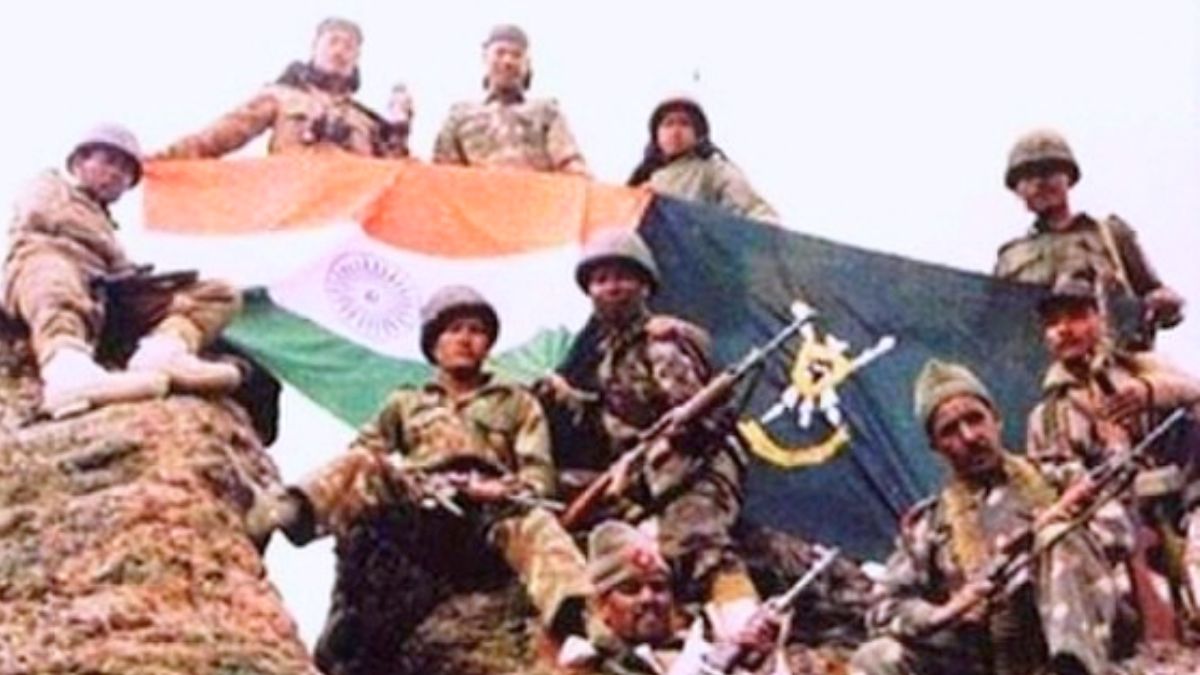When one recollects the start of the Kargil War of 1999, the first picture to pop up in mind is perhaps that of incursion by Pakistani soldiers disguised as indigenous Kashmiri “freedom fighters”.
This is not a new strategy. Pakistan has wielded proxy warfare as a tool of statecraft for decades before the Kargil War, and stuck to it for decades after.
By backing militants and irregular fighters, the military establishment sought to challenge India without provoking full-scale retaliation, wrongly betting on plausible deniability to mask its role.
Such tactics have only served to breed instability and suffering in both the countries, and especially in this exquisite yet volatile region. We take a look at how this has happened before, during, and after Kargil.
How long has Pakistan used proxy warfare against India?
Soon after independence from British rule and Partition of the Indian subcontinent, Pakistan initiated operations in Kashmir by sending tribal militias (the so-called “raiders”) to seize the region. Although the narrative spun around them tried to potray these attacks as local uprisings, the actions were in fact fully supported by regular army units.
Pakistan did not give up after failing once. In 1965, it launched Operation Gibraltar— once again sending thousands of armed infiltrators disguised as Kashmiri locals crossed into Indian territory. The aim, to spark an insurgency that would prompt international intervention, did not come to fruition as the infiltrators failed to rally popular support. Then, Pakistan sent in regular troops, escalating the crisis into a full-fledged war.
By the late 1990s, Pakistan was ready for yet another misadventure.
How did Pakistan use proxies during the Kargil War?
The Kargil manoeuvre was an audacious albeit ill-fated gamble. In late 1998 and early 1999, soldiers from Pakistan’s Northern Light Infantry (NLI) infiltrated across the Line of Control in small groups, posing as Kashmiri “mujahideen.” Exploiting the winter conditions when Indian patrols were minimal in the treacherous terrain, Pakistani forces occupied key heights overlooking the Srinagar–Leh highway.
Their positions allowed them to rain fire on Indian convoys below, seeking to sever key supply lines and force New Delhi into a disadvantageous diplomatic settlement.
Islamabad maintained the façade that the fighters were local “freedom fighter”, repeating this line in international forums. It had even gone so far as to embed members of militant outfits like Lashkar-e-Taiba and Jaish-e-Mohammed alongside regular soldiers to give some ground to the narrative. The denial was important to avoid international condemnation and the risk of a larger Indian military response.
Ever more dishonourable was that Pakistan, in a bid to keep up the futile lie, refused to claim fallen soldiers, even those bearing clear identification. They were recovered by Indian troops and given funerals with all military honours.
What human cost did these tactics exact?
The war caused great suffering. India lost 527 soldiers and over 1,300 were wounded, many with lifelong injuries and psychological scars. Pakistani losses are harder to verify due to state obfuscation, but some independent estimates place the number as high as 4,000.
Pakistan refused to acknowledge most of its fallen soldiers. Captain Karnal Sher Khan’s case remains emblematic: initially disowned, his body was returned with full honours, and a citation by an Indian officer of the man’s bravery. Pakistan belatedly celebrated him as a hero after reluctantly bestowing upon him the Nishan-e-Haidar. Countless Pakistani families never received official word of their relatives’ fate, leaving them without closure or graves to mourn.
For locals, too, the suffering was severe. On the Indian side, at least three frontline villages were destroyed, displacing thousands. These people could only return only after the fighting subsided.
In Pakistan, the scale of displacement was far greater: about 38,000 people fled their homes during the conflict. The war left behind unexploded ordnance, mined fields, and ruined orchards, rendering entire villages uninhabitable for years. Livelihoods were obliterated as farms and livestock were abandoned. The psychological toll was immense, as families endured shelling, landmine explosions, and the constant fear for loved ones.
Unlike in India, many people could not return home even over two decades later. As many as 10,000 remained displaced, as the promised aid from the government never came.
How did the Kargil War reshape Pakistan’s politics?
In addition to suffering, the reckless war gave rise to political instability.
The fallout from Kargil deepened rifts between Pakistan’s civilian government and military. Prime Minister Nawaz Sharif, humiliated on the world stage, blamed the army leadership, particularly General Pervez Musharraf, for the debacle. Evidence later showed that Sharif’s government had been kept in the dark about key operational details.
The diplomatic backlash and military defeat left Sharif politically vulnerable. In October 1999, just months after the war, Gen Musharraf staged Pakistan’s third military coup, ousting Sharif and cementing the army’s grip on politics.
Does Pakistan continue using proxy warfare in Kashmir?
Inspired by General Zia-ul-Haq’s vision of “bleeding India with a thousand cuts,” Pakistan’s security establishment continues to favour low-intensity, proxy conflict over direct confrontation. The Inter-Services Intelligence (ISI) has long funded, trained and armed militant groups like Lashkar-e-Taiba, Jaish-e-Mohammed and Hizbul Mujahideen to sustain insurgency in Kashmir.
Even as global scrutiny increased, Pakistan adapted instead of dropping such underhanded techniques altogether. Newer groups such as The Resistance Front (TRF) emerged, often as rebrands of older organisations, to circumvent international sanctions. Beyond India, similar proxy tactics were used in Afghanistan, where Pakistan’s support for the Taliban and Haqqani Network aimed to limit Indian influence in Kabul.
The military, entrenched as the most powerful institution in the country, gains from this perpetual conflict. Its dominance in politics and access to resources remain intact, while instability in the region persists—leaving behind a legacy of war, displacement, and unending human suffering.
